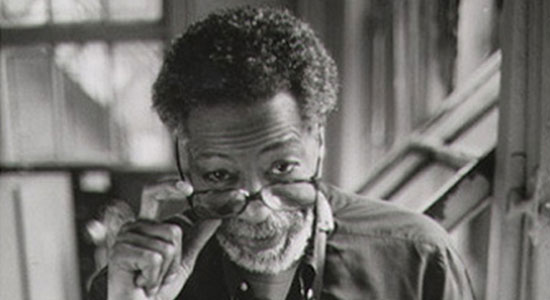 You might know award-winning critic/journalist Tom Moon from his bestselling book 1,000 Recordings To Hear Before You Die, his contributions to NPR’s All Things Considered or his freelance work in the likes of Rolling Stone, GQ, Blender, Spin and Vibe, but around the MAGNET office, when we think of Moon, we think of the nearly two decades he spent as the music critic of our hometown newspaper, the Philadelphia Inquirer. When you regularly read a writer’s work for that long, you feel like you really get a sense of who someone is, so we were shocked to find out that Moon is also a musician who just made an album. Into The Ojalá (Frosty Cordial) is credited to Moon Hotel Lounge Project and came out earlier this month. MHLP is an impressive, instrumental, jazz/lounge/Latin-leaning project featuring Moon and six local musicians playing nine Moon-penned tunes as well as a cover of gospel standard “Rock Of Ages.” We are excited to have Moon guest editing magnetmagazine.com all week. Read our new Q&A with him.
You might know award-winning critic/journalist Tom Moon from his bestselling book 1,000 Recordings To Hear Before You Die, his contributions to NPR’s All Things Considered or his freelance work in the likes of Rolling Stone, GQ, Blender, Spin and Vibe, but around the MAGNET office, when we think of Moon, we think of the nearly two decades he spent as the music critic of our hometown newspaper, the Philadelphia Inquirer. When you regularly read a writer’s work for that long, you feel like you really get a sense of who someone is, so we were shocked to find out that Moon is also a musician who just made an album. Into The Ojalá (Frosty Cordial) is credited to Moon Hotel Lounge Project and came out earlier this month. MHLP is an impressive, instrumental, jazz/lounge/Latin-leaning project featuring Moon and six local musicians playing nine Moon-penned tunes as well as a cover of gospel standard “Rock Of Ages.” We are excited to have Moon guest editing magnetmagazine.com all week. Read our new Q&A with him.

Moon: Tenor saxophonist Joe Henderson (1937-2001) didn’t have the technical fluency of John Coltrane or the roar of Archie Shepp, and his squiggling, haywire lines remain impossible to imitate. He was conversant in bebop, but never embraced it as an exclusive language, the way Dexter Gordon did. He’s associated with the golden age of Blue Note hard bop, but Henderson was also a formidable “free” improviser. In his best work, you hear him methodically picking apart the harmony, clawing at its confines, implying voyages to outer-limit areas he then didn’t need to fully undertake. This adaptability, this chameleonic personality, put Henderson in high demand for a long time and led him into all kinds of unusual recording situations. A lifer and not a “jazz star” until the Verve titles he released in his last years, he was involved in a ton of profoundly original and uncompromising music; it’s a shame so little of it is well-known. Here are five titles that might serve as starting points for an exploration of Henderson’s contribution.
Kenny Dorham Una Mas (Blue Note, 1963)
A crackling blowing date featuring Henderson and pianist Herbie Hancock working Dorham’s Latin-leaning originals to a near frenzy.
Joe Henderson Inner Urge (Blue Note, 1964)
As he lunges through hairpin turns and slaloms, Henderson here shows how attention to small matters—staccato bursts of precise articulation, flights through unconventional chord arpeggios, scampering swing rhythms—can mushroom into epic stories. A classic.
Bobby Hutcherson Stick Up! (Blue Note, 1966)
Turned loose on vibraphonist Hutcherson’s modal tunes, Henderson sets out a language that’s coolly logical and daring at the same time. In the squiggles of his solos you can hear a common ground where the bar-walking honkers of tenor lore hang out with the worshippers of Coltrane’s heroic sheets of sound and the brooders who traffic in dark chords.
Joe Henderson Power To The People (Milestone, 1969)
Arguably the tenorman’s most complete statement, this is a feast of angular-yet-lyrical melodies and correspondingly assymetrical improvisations. It’s also a great date for Hancock, on both acoustic and electric piano.
Joe Henderson Double Rainbow: The Music Of Antonio Carlos Jobim (Verve, 1994)
This tribute to the bossa nova creator dwells in a beautiful, ruminating-at-twilight mood and catches Henderson blowing proud and sweet on elegant miniatures “Triste” and “Once I Loved.”
Video after the jump.






